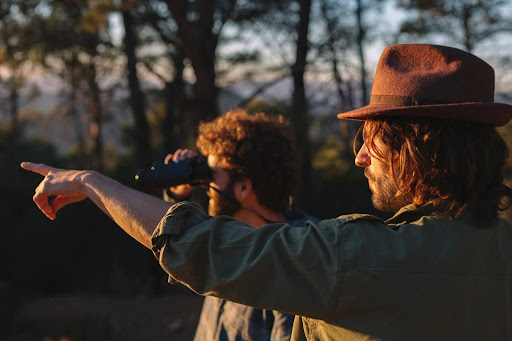Importance of wildlife preservation
Wildlife preservation plays a crucial role in maintaining the delicate balance of our ecosystem. By protecting and conserving various animal species and their habitats, we ensure the preservation of biodiversity, which is essential for the overall health and sustainability of our planet.
One of the main reasons why wildlife preservation is important is because of the significant role animals play in our environment. Animals contribute to pollination, seed dispersal, and nutrient cycling, which are essential processes for maintaining healthy ecosystems. For example, bees are the primary pollinators for many plants, including crops that provide us with food. Without bees, the process of pollination would be severely disrupted, leading to a decline in agricultural productivity.
In addition to their ecological importance, animals also have cultural and economic value. Many animal species are revered in various cultures and play a significant role in their mythology, art, and traditions. Furthermore, wildlife tourism is a growing industry that generates revenue and employment opportunities for local communities. By preserving wildlife and their habitats, we protect these cultural and economic values.
Furthermore, wildlife preservation is closely linked to human well-being. Many medicines and medical treatments have been derived from natural compounds found in plants and animals. By preserving wildlife, we maintain a vast catalog of potential sources for new drugs and therapies. Additionally, spending time in natural environments and encountering wildlife has been shown to have a positive impact on mental health, reducing stress and improving overall well-being.
Overall, wildlife preservation is crucial for the long-term survival of our planet and the well-being of both animals and humans. By protecting and conserving wildlife, we can ensure the continued existence of thriving ecosystems, maintain cultural and economic values, and support the development of new medicines and therapies.
Sustainable wildlife management
While the preservation of wildlife is important, it is also crucial to implement sustainable management practices to ensure the long-term viability of animal populations and their habitats. Sustainable wildlife management involves striking a balance between conservation and responsible use of natural resources.
One of the key principles of sustainable wildlife management is maintaining population stability. It is essential to monitor and regulate animal populations to prevent overpopulation or extinction. This can be achieved through measures such as establishing protected areas, implementing hunting and fishing regulations, and controlling invasive species that disrupt natural ecosystems.
In addition to population management, sustainable wildlife management also focuses on protecting habitats. Animals rely on specific habitats to meet their basic needs such as food, water, and shelter. By conserving and restoring habitats, we provide animals with the necessary resources for their survival. This can involve initiatives like reforestation, wetland restoration, and the creation of wildlife corridors to connect fragmented habitats.
Furthermore, sustainable wildlife management involves promoting sustainable use of natural resources. This can include practices such as sustainable hunting and fishing, promoting eco-tourism that respects wildlife and habitats, and encouraging the use of sustainable materials derived from wildlife products.
By implementing sustainable wildlife management practices, we can ensure the long-term survival of animal populations, protect their habitats, and promote the responsible use of natural resources. This approach allows us to strike a balance between conservation and human activities, ensuring the sustainable coexistence of wildlife and people.
Wildlife conservation efforts
Various organizations and initiatives are dedicated to wildlife conservation efforts worldwide. These efforts aim to protect and preserve endangered species, restore habitats, and promote environmental education and awareness. Here are some examples of wildlife conservation efforts:
1. Protected Areas
Protected areas, such as national parks, wildlife refuges, and nature reserves, play a crucial role in conserving wildlife and their habitats. These designated areas provide safe havens for animals and restrict human activities that may harm the ecosystem.
2. Wildlife Rehabilitation and Rescue
Many organizations specialize in the rescue, rehabilitation, and release of injured or orphaned wildlife. These facilities provide medical care, shelter, and support to ensure that animals can recover and return to their natural habitats.
3. Species Recovery Programs
Endangered species recovery programs focus on identifying and protecting species that are at risk of extinction. These programs involve breeding endangered species in captivity, reintroducing them into the wild, and implementing measures to enhance their survival and reproductive success.
4. Conservation Education and Awareness
Education and awareness programs are essential in promoting the value of wildlife conservation. These programs aim to educate the public about the importance of nature, biodiversity, and the need for sustainable practices. They also encourage individuals to take action to protect wildlife and their habitats.
5. Sustainable Land and Resource Management
Efforts to promote sustainable land and resource management practices are crucial for wildlife conservation. This includes measures to prevent deforestation, promote sustainable agriculture, and reduce pollution and habitat destruction.
6. International Agreements and Conventions
International agreements and conventions, such as the Convention on International Trade in Endangered Species of Wild Fauna and Flora (CITES), aim to regulate and control the international trade of endangered species and their parts. These agreements help prevent illegal wildlife trafficking and contribute to the conservation of endangered species.
These are just a few examples of the many wildlife conservation efforts taking place globally. By supporting and participating in these initiatives, individuals, communities, and governments can contribute to the preservation of wildlife and the protection of our natural heritage.
























